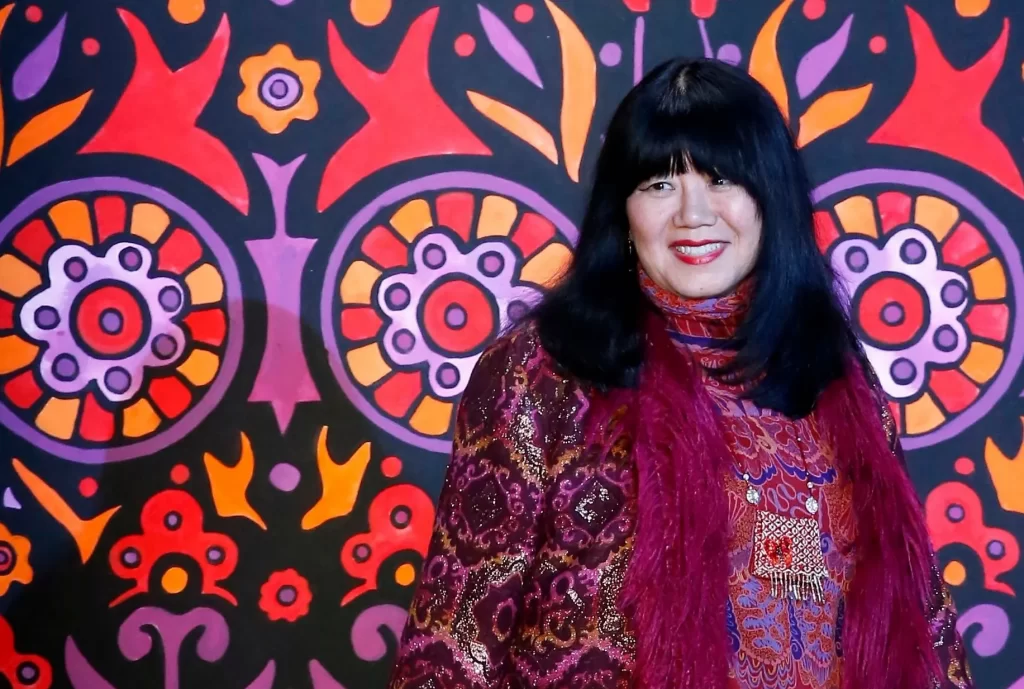It’s Anna’s world, and we’re all living in it. And we don’t mean Anna Wintour.
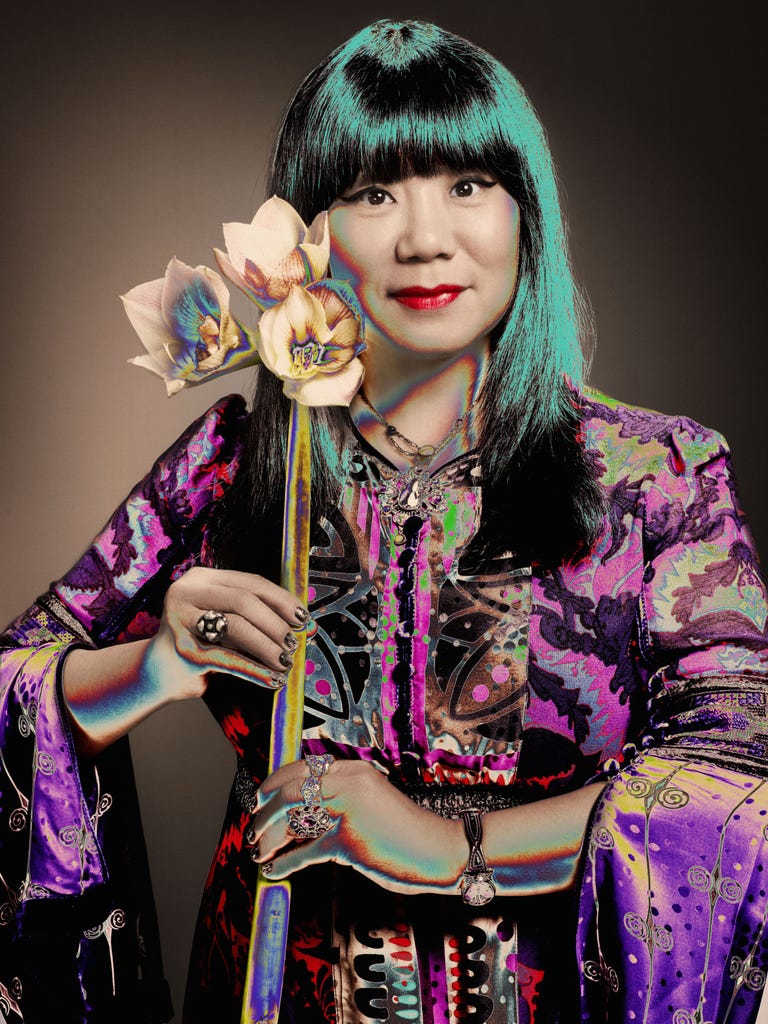
Anna Sui
“Clothes have to be fun; otherwise, who wants to bother?” Anna Sui once told Vogue. Over three decades into her illustrious career, this recipient of the CFDA Geoffrey Beene Lifetime Achievement Award is just as creative, playful and on-trend, with her AW22 line described by Vogue as “her strongest marriage of retro ideas with newly popular silhouettes yet, a decadent and delightful romp through Brit Pop, Art Deco, and New Wave.” Sui’s designs have always been a lightning rod for a young, antiestablishment clientele keen on her sartorial translation of ’60s rockers, ’20s flappers, and ’90s It Girls. Today, we take a deep dive into the story of her success.
Promising Beginnings
Anna Sui worked hard to transform her dreams into reality. After finishing her second year at Parsons, she was hired by Erica Elias’ junior apparel label where she designed sportswear. During this time, she tried her hand at styling photography shoots of her former Parsons’ classmate, Steven Meisel. Her work on the famed photographer’s shoots were featured in the Italian magazine Lei, and were very well received. There was no looking back since.
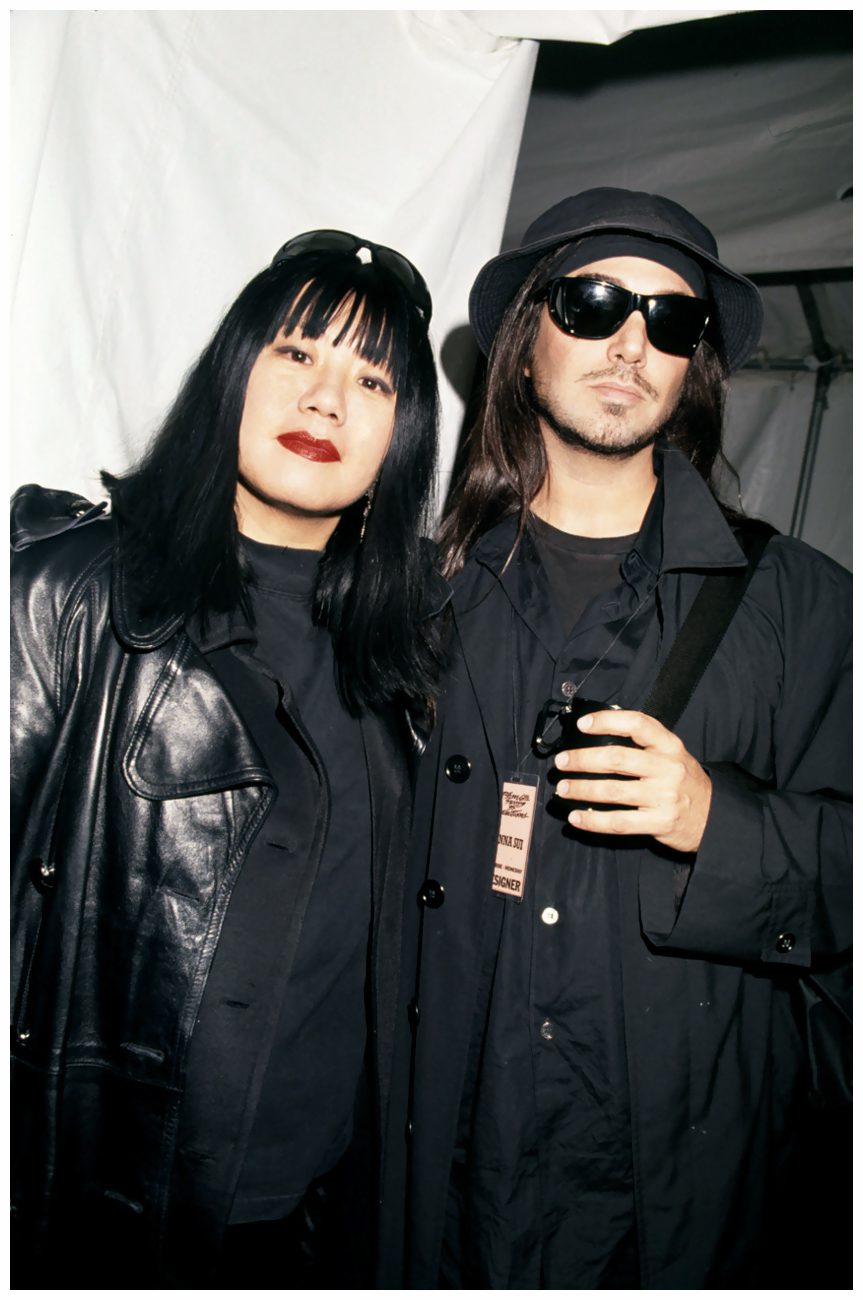
Anna Sui and Steven Meisel. Source: wordpress
When Erica Elias’ junior label shut down, Sui worked for several sportswear designers including Bobbie Brooks and Simultanee. During this time, she began designing apparel in her apartment. Sui stated that she was inspired to launch her own label by her teenage desire to dress rock stars and people who attended concerts. Indeed, during this timescape, she focused on targeting sales to music stores instead of department stores. She was completely invested in her vision.
While working for sportswear company Glenora, she brought her collection of five pieces to a New York trade show, and caught the attention of New York department stores Bloomingdale’s and Macy’s. A few weeks later, those ensembles were featured in an advertisement in The New York Times. The manager at Glenora, where Sui was still on a payroll, was furious and fired her on the spot. Left without a job, Sui took her $300 in savings and started a business out of a little corner of the living room in her apartment. For several years she ran the company out of her apartment, doing odd-jobs for spare income and reinvesting every penny of earnings into her business.
The Eighties was the apex of power-dressing, with luxury brands such as Chanel, Dior and Versace setting the standard. Sui was one of the few designers who distanced herself from these fashion houses and explored the grunge scene astride Marc Jacobs, Daryl K and Todd Oldham. Around 1987, she got the opportunity to move her line into Annette B, a showroom curated by Annette Breindel. Breindel, who had a history of nurturing young designers, was a big influence and helped Sui get a foothold in the fashion industry. After almost a decade of working from her apartment, Sui finally moved her operations into the Garment District.
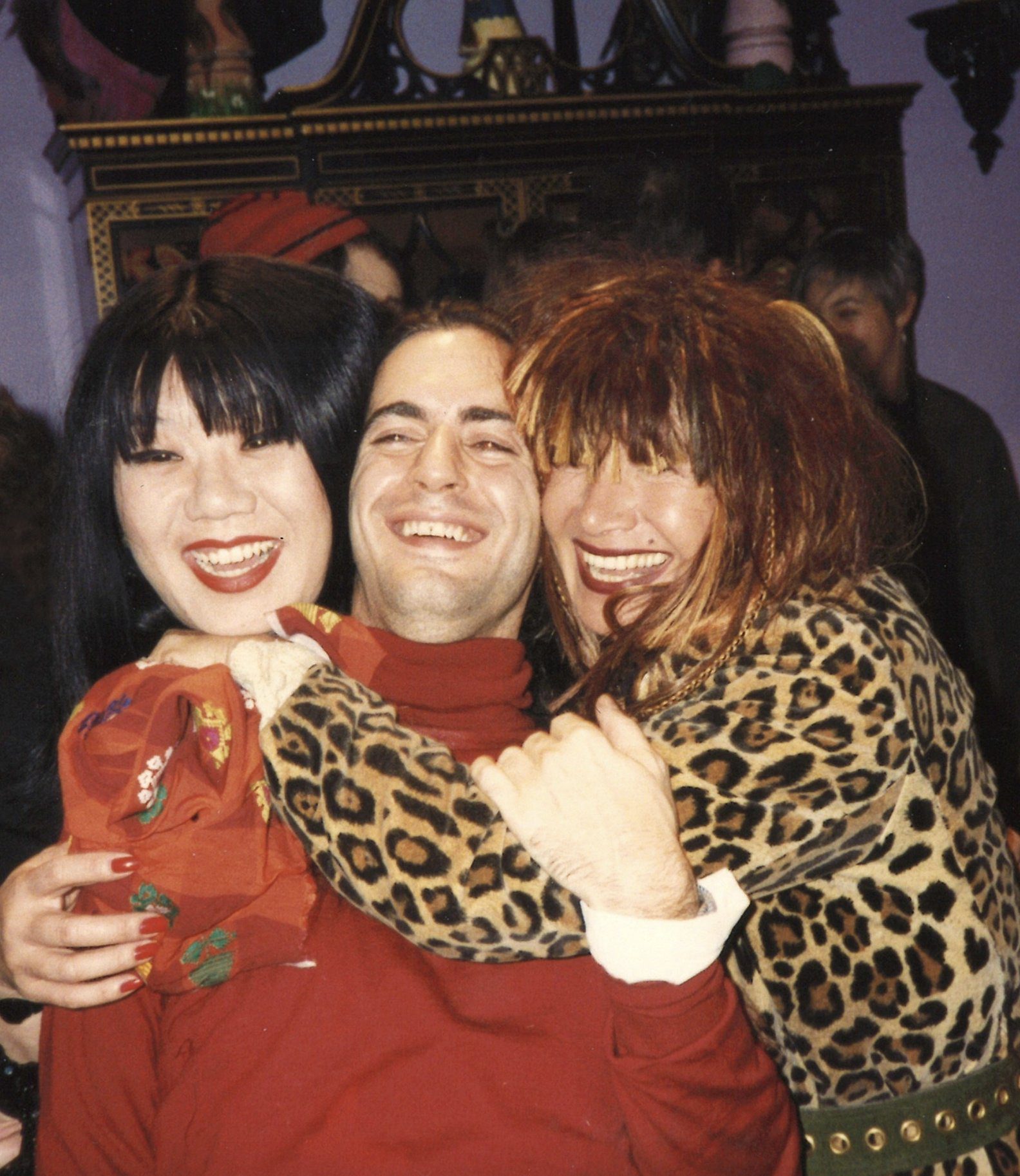
Marc Jacobs, Anna Sui and Betsey Johnson photographed in 1993. Source: @marcjacobs on Twitter.
Nineties Notoriety
By the late Eighties, Sui attracted a cult following, captivating the attention of Onward Kashiyama among other Japanese designers famed for the same experimental nous that they recognised in Sui’s work. This sowed the seeds for the expansion of Sui’s operations in Japan in the mid 90s. But before international success, Sui found renown in her home country of America. In 1991, Steven Meisel, stylist Paul Cavaco, and supermodels Naomi Campbell, Christy Turlington and Linda Evangelista got together and encouraged her to do a show. Sui rented a small space in the Meatpacking District and paid the models in clothes. It was an instant hit, the New York crowd taken in by the artisanal charm and youthful panache of Sui’s runway. She has remained faithful to this winning formula, her shows embracing a unique ambience reminiscent of a grunge rock party.
1991 was also the year Sui got her first major celebrity sponsorship in the form of Madonna, at the time the biggest star in the world, who wore her design, accompanied by Steven Meisel and Sui herself, to a Jean Paul Gaultier show at Paris Fashion Week. Before long, legendary photographer Irving Penn was shooting Sui’s pieces for Vogue, which declared in 1992: “The real secret of Sui’s success is price. No item in the collection sells for more than $400.”
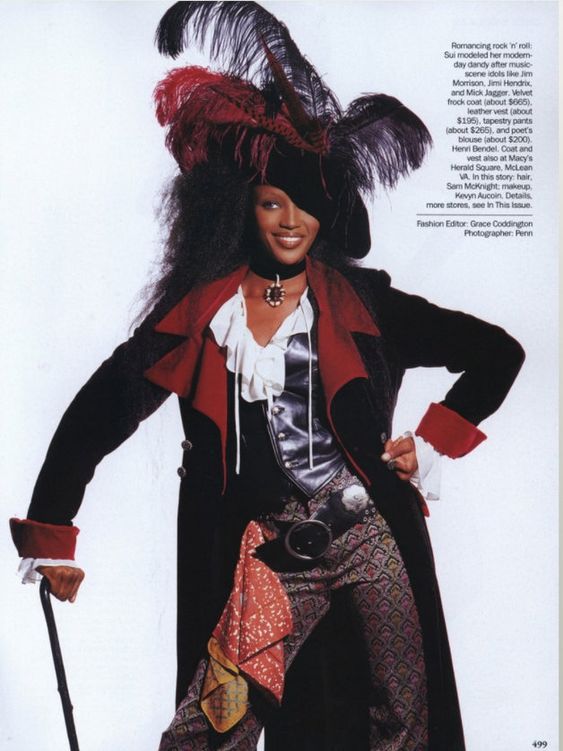
Anna Sui Fall 1992 ensemble modelled by Naomi Campbell, styled by Grace Coddington and shot by Irving Penn for Vogue.
Sui’s more affordable price tags pair with her accessible and youthful ethos: she was a champion of sustainability long before it was cool, and has won over the fashion coterie with her upbeat, pragmatic, distinctly American attitude: “You can’t have fun in a $3,000 jacket; it’s just too prissy. Besides, fashion changes, and that’s what’s interesting. If you spend a lot of money, then you’re committed to your clothing.”
Sui opened her first boutique in 1992 at 113 Greene Street in New York City. The flagship is famed for its red floors, antique black furniture, signature dolly head mannequins and purple walls, which Sui painted herself. In 1993, Anna Sui Corporation opened a store in Hollywood. The same year, she introduced menswear with Mick Jagger appearing on Saturday Night Live in one of her suits. Anna Sui Shoes, manufactured in Venice, premiered on the runway in Autumn 1994. Later, Sui began production of a diffusion fashion line titled ‘Sui by Anna Sui’ and a denim line, ‘Anna Sui Jeans’ with Italian fashion house, Gilmar S.p.A. The same year, she also began consulting for Gilmar’s Cento x Cento and Iceberg. To consolidate the financial security of her brand and guarantee longterm creative agency over her designs, she ventured into licensed products through her perfume line. Of all the legends to emerge from the Downtown New York fashion scene in the 90s, Sui has stuck to her guns the most, courting generations of alternative shoppers for more than three decades.
Continued Success
What is the secret of Sui’s continued success? She tells Elle,
I think there are several factors. I own my own company, so what else am I going to do? I have to keep going. And I think the fact that I have such an identifiable brand has given us so many things to draw from. Part of the success of the license products, like the cosmetics and the fragrance and the accessories, is that they’re so recognizable… We use the fashion lines to inspire those, That’s always my advice to new designers: You have to come up with an identity. It has to be a recognizable product.
Even today, Anna Sui fan girls live for her newest collections. “I think they love the clothes,” she tells Vogue. “They felt like it was clothes for them — it wasn’t Mommy’s clothes. They were so used to being put together in this head-to-toe lady look and they were kids. All of a sudden they related. I think that spirit has always come through — they can relate to the clothes… There’s a vibrancy to the color and the prints. I just like that energy.”
We do too, Anna. We do too.

Photo Credit: Richie Lee Davis for Anna Sui
Read More:
Jasmeen Dugal is Associate Editor at FashionABC, contributing her insights on fashion, technology, and sustainability. She brings with herself more than two decades of editorial experience, working for national newspapers and luxury magazines in India.
Jasmeen Dugal has worked with exchange4media as a senior writer contributing articles on the country’s advertising and marketing movements, and then with Condenast India as Net Editor where she helmed Vogue India’s official website in terms of design, layout and daily content. Besides this, she is also an entrepreneur running her own luxury portal, Explosivefashion, which highlights the latest in luxury fashion and hospitality.


